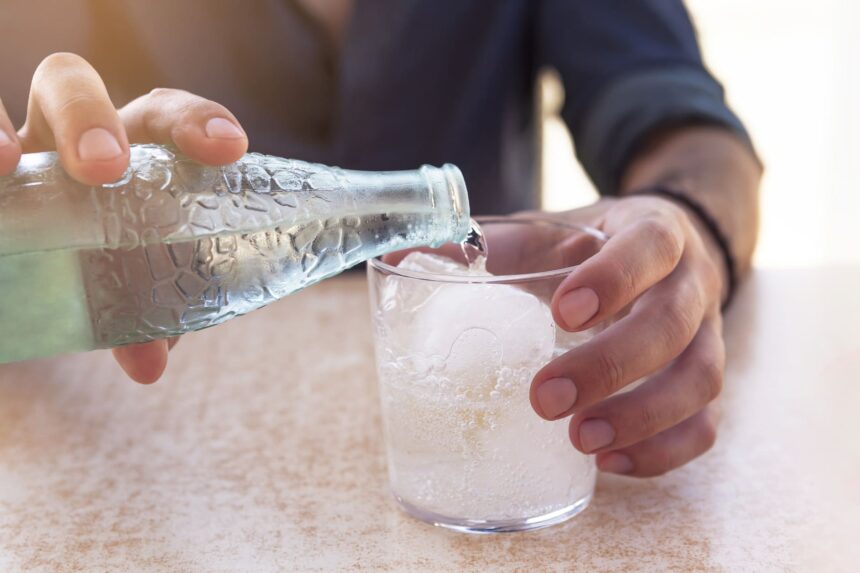Water is a fundamental part of all our lives, but bottled water can represent a must-have daily item for some or a treat for others. With many British consumers opting to drink more free water to limit their spending on bottled water, and less than a third of Americans opting to drink premium bottled water, it appears that tighter economic conditions have pushed consumers to think twice about drinking bottled water.
With economic difficulty, as well as a consumer trend towards sustainability, how has the bottled water industry fared in 2023? Join Mintel as we explore the industry, consumer preferences, and the future of the global bottled water industry.
What Bottled Water Consumers Want
Bottled Water in the UK
In the UK, consumption of bottled water is evenly split across men and women, who typically drink bottled water as often as one another. However, when we dive further into typical consumers of bottled water in terms of age group, younger consumers are far more likely to drink bottled water than older consumers. Three-quarters of Brits aged 16-19 drink bottled water, compared to less than a third of consumers aged 65 and over. This figure has stayed the same between 2022 and 2023, which suggests that on a consistent level, younger consumers tend to drink more bottled water than older consumers.
Interestingly, across all varieties of bottled water, consumption declines as demographics get older. This includes still and sparkling, as well as flavoured and unflavoured water. Regardless of flavour and fizz, young consumers are more avid consumers of bottled water than older consumers in the UK.
This can be explained, in part, by a perception of safety, which may be a key purchase factor. Three times as many young consumers than older consumers think that bottled water is safer than tap water. Meanwhile, around two-thirds of all consumers think that filtered water and bottled water taste similarly good. Consumers place importance in hygiene, and enjoy the taste of filtered water. Brands may harness these consumer priorities by driving interest in water-filter products, which may offer consumers the desired hygiene and taste coupled with convenience and sustainability.
However, as usage of reusable water bottles declines with each age group increase, we can see that sustainable water consumption is still important to young consumers – but perhaps sustainable packaging is more of a concern than sustainable water sourcing.
Visit the Mintel Store for more Drinks Industry Insights
Bottled Water in the US
Comparing US bottled water consumption to that of the UK, the same generational divide does not translate. Whereas the UK sees a significant generational disparity in bottled water consumption, in the US there is a range of less than 10% between the age groups. There is a greater generational disparity concerning sparkling water than still water – 18% more young people drink sparkling water than older consumers, whereas there is an insignificant difference of 2% as pertains to still water.
So, the age of consumers appears to have less impact on water consumption habits in the US than in the UK – but what does influence consumers’ decisions? For most, the key factor in drinking water has to do with hydration rather than safety. Comparing American consumers who value hydration as a health goal and who think bottled water is the safer drinking water option, a third more consumers value hydration than bottled water for safety. What is more, almost three-quarters of American consumers noted that they drink tap water to save money, which highlights thrift as a key decision-making factor in water habits.
Emerging Trends in the Global Bottled Water Industry
With sustainability representing a global trend, especially within product packaging, it will come as no surprise to most that a major trend in the bottled water industry globally is a shift towards more climate-conscious packaging. For many bottled water producers, that means moving away from bottles and towards cans. This is part of a trend of new launches in cans rather than plastic bottles which has been ongoing for the past couple of years, and that continued significantly in 2023.
In the UK, 60% of consumers agreed that plastic bottles are the least environmentally friendly drink packaging, while a third agreed that non-plastic packaging is more sustainable. With around half of British consumers finding sustainable packaging to be an important part of drinks packaging design, it appears that bottled water producers are moving away from plastic bottles in a bid to capture a sustainable market.
To get on board with this trend, brands can incentivise and support consumers in their efforts to recycle. In 2022, Evian partnered with Sainsbury’s for a two-week ‘Return4Reward’ digital reward scheme. This invited consumers to bring their Evian bottles and cans to be recycled in one of the chain’s stores in North London to enter a draw to win tickets to the 2023 Wimbledon final. This is a great example of brands bringing together consumer values with a marketing strategy.
With sustainable water prioritised in the UK, what about the rest of the world? In the Middle East and Africa, bottled water products with added vitamins and minerals are thriving, with more recorded new launches than in previous years. This is also prominent in America, where almost half of consumers enjoy bottled water with added nutritional benefits in order to be better hydrated.
In the APAC region, sustainable launches have also been significant in 2023. Although bottles are undoubtedly the primary packaging choice for water, canned water launches have tripled since 2019. Typically associated with flavoured and sparkling waters, there is room for sustainable packaging innovation in Asia.
New Bottled Water Launches
With sustainability and added nutrition at the heart of new bottled water product launches in 2023, who are the major players?
- In Ecuador, Fakulti has released a CBD-infused sparkling water offering relaxation benefits as well as hydration and fresh flavours.
- Australian brand Helping Humans has released immunity-boosting flavoured waters which harness natural ingredients like turmeric and echinacea.
- In the UK, Amazon has launched a reasonably priced 5-litre bottle of spring water, which cuts down on plastic packaging whilst offering bottled water hygiene.
- Thailand’s Greenery Mineral Water offers consumers recyclable metal packaging with their hydration.
Looking Ahead with Mintel
In recent years, sustainability has pushed brands to innovate towards less plastic packaging, so we expect to see a continuation of new launches showcasing alternative, and more conservative, packaging styles. This is likely to include canned water options, as well as plastic bottles with reduced packaging and plastic bottles made from recycled materials.
As younger consumers tend to be the typical bottled water consumer, largely on account of safety and hygiene concerns, we may also see brands capitalising on the perception of bottled water as safer than tap water. This may be exaggerated with an existing trend towards bottled water with added minerals and vitamins. If bottled water products can offer a clean, nutritious beverage, then they will be targeting consumer priorities.
Sign up to Spotlight








